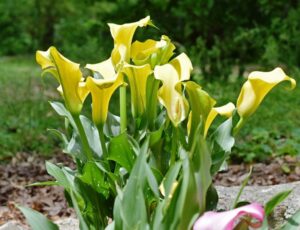If you’re looking to enhance your garden this month, join me as we dive into some fantastic plants to add to your landscape. Whether you’re aiming for a colorful flower bed or a productive vegetable patch, June is ripe for planting.
Zinnias (Zinnia elegans)
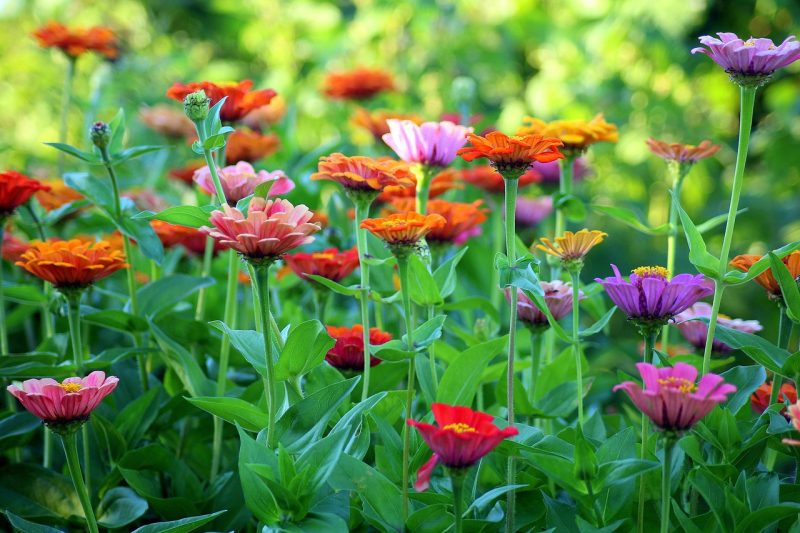
Temperature Tolerance: Zinnias are hardy annuals that thrive in warm conditions, preferring temperatures between 70°F to 90°F (21°C to 32°C). They can tolerate short periods of cooler weather, but persistent chill can hinder their growth.
Planting Dates: In most regions, you can begin planting zinnias directly in the garden around mid to late May through June. If you’re in a cooler area, wait until the risk of frost has passed completely.
Details and Tips: Zinnias are not only easy to grow but come in a stunning variety of colors and shapes, ranging from small pom-pom styles to large, open blooms. They attract pollinators like bees and butterflies, making them beneficial for your garden’s ecosystem. Regular deadheading—removing spent blooms—encourages continuous flowering throughout the summer, extending your enjoyment of these bright blooms.
Nasturtiums (Tropaeolum)
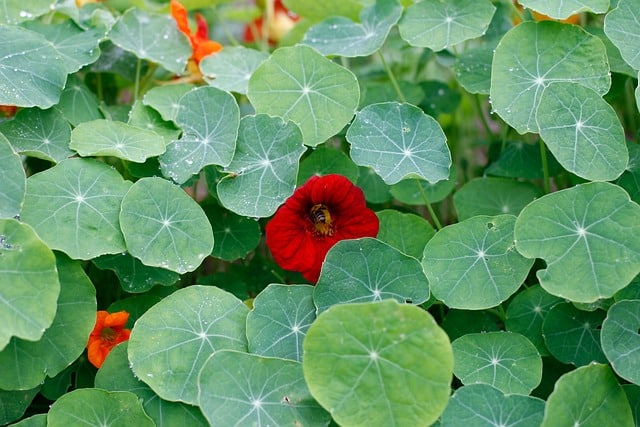
Temperature Tolerance: Nasturtiums are quite adaptable and prefer temperatures between 60°F to 75°F (15°C to 24°C). They are more tolerant of cooler temperatures than some other summer flowers, but prolonged frost can kill them.
Planting Dates: You can sow nasturtium seeds directly in your garden from mid-April to June. In milder climates, early planting can yield blooms by summer, while in colder areas, waiting for the complete thaw is wise.
Details and Tips: Beyond their beauty, nasturtiums are valued for their edible flowers and leaves, which have a peppery flavor that can enhance salads and dishes. Their vibrant blooms create visual interest and can act as a trap crop to ward off pests like aphids. Nasturtiums thrive in poorer soils—over-fertilization can lead to excess foliage and fewer flowers, so plant them in well-drained, average soil for the best results.
Sunflowers (Helianthus)
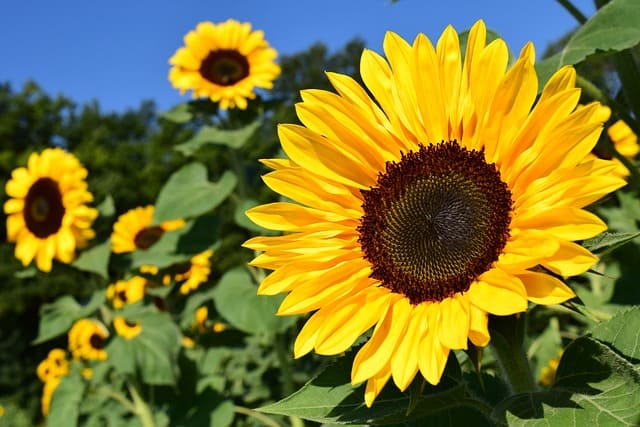
Temperature Tolerance: Sunflowers flourish in temperatures ranging from 70°F to 100°F (21°C to 38°C). They are generally tolerant of heat and can withstand short periods of drought once established.
Planting Dates: Sunflower seeds can be sown directly in the garden anytime from late April to June. To ensure a staggered blooming period, consider planting seeds at two-week intervals up until mid-June.
Details and Tips: Sunflowers not only provide stunning visuals but are also a crucial food source for pollinators and birds. The seeds of sunflowers can be harvested in late summer, offering delicious snacks or bird feed. For best growth, plant them in full sun and provide ample space between varieties to avoid competition. Consider planting different varieties for a gorgeous mix of heights and colors.
Marigolds (Tagetes)
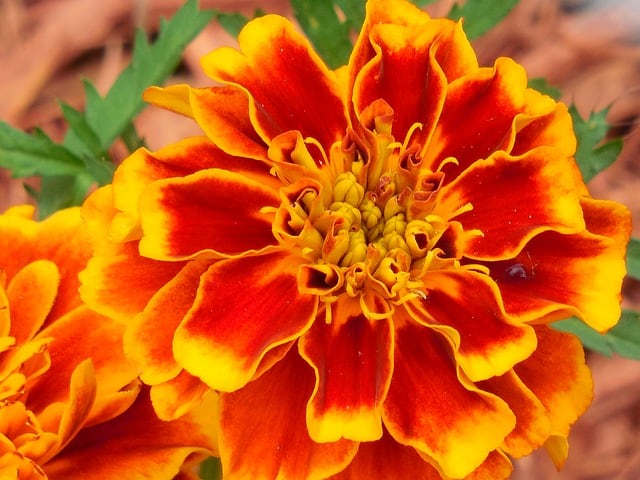
Temperature Tolerance: Marigolds adapt well to temperatures ranging between 70°F to 85°F (21°C to 29°C). They are sensitive to frost, but once established in warm weather, they can thrive during the hottest months.
Planting Dates: You can plant marigold seeds or transplants from mid to late May until late June. If you’re in a cooler region, it’s advisable to wait until all danger of frost has passed.
Details and Tips: Marigolds are not only beautiful but also effective companions for vegetable gardens. They naturally repel pests such as nematodes and aphids. Deadheading encourages longer flowering, and their blooms can last throughout the summer into the fall. When planting, make sure to space them properly to allow good air circulation, reducing the risk of disease.
Cosmos (Cosmos bipinnatus)
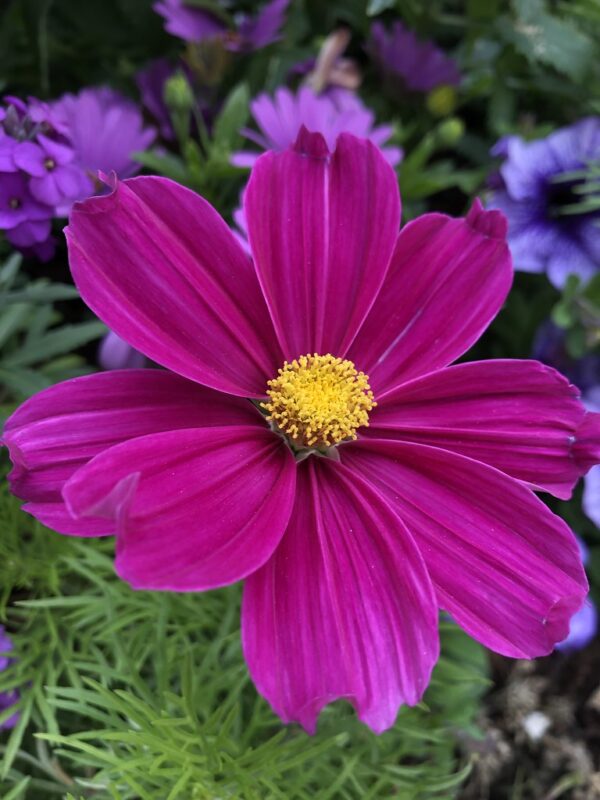
Temperature Tolerance: Cosmos thrive best in warm weather, preferring temperatures between 70°F to 80°F (21°C to 27°C). They can withstand some heat but will struggle in temperatures exceeding 90°F (32°C) without adequate moisture.
Planting Dates: Sow cosmos seeds directly outdoors from late May through June. For cooler regions, start seeds indoors a few weeks prior to the last frost for an earlier bloom.
Details and Tips: Cosmos are especially valuable for their ability to attract pollinators, making them beneficial for the entire garden ecosystem. They perform well in lower-nutrient soils and are drought-tolerant once established, making them a great choice for low-maintenance gardens. Use them in wildflower mixes or as borders for vegetable gardens to catch the eye.
Calendula (Calendula officinalis)
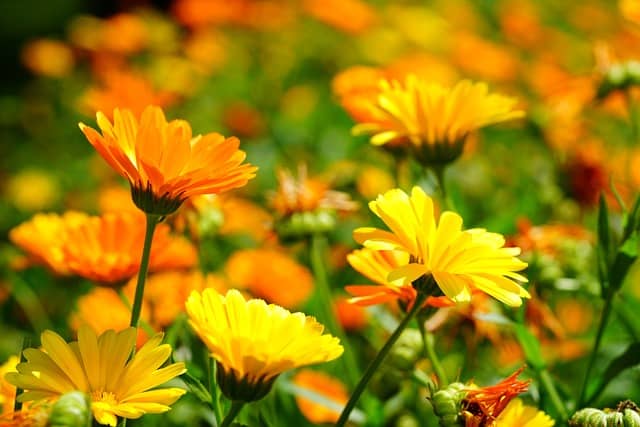
Temperature Tolerance: Calendula thrives well in cool to warm temperatures, ranging between 55°F to 75°F (13°C to 24°C). They can tolerate light frosts but tend to do most of their blooming in cooler weather.
Planting Dates: For continuous blooms throughout summer, plant calendula seeds directly into the garden any time from mid-spring to June.
Details and Tips: Calendula flowers are not only stunning but also edible, making them popular for adding color to salads and garnishes. These flowers are also renowned for their medicinal properties, often used in salves and skincare. To promote long-term blooming, regularly deadhead spent flowers.
Limnanthes (Limnanthes douglasii)
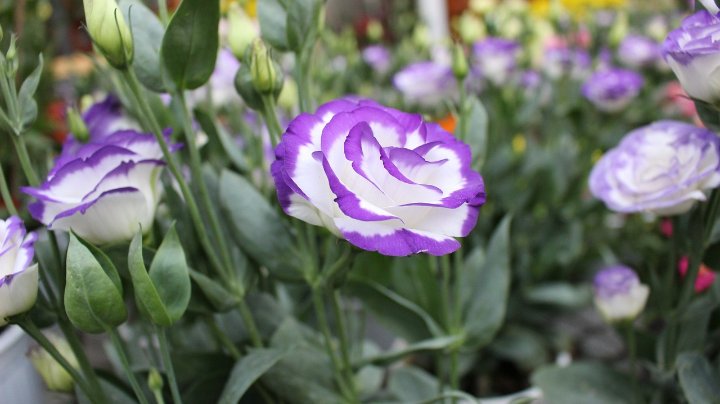
Temperature Tolerance: Known as poached egg plant, Limnanthes prefers moderate temperatures between 60°F and 70°F (16°C to 21°C). While they can withstand some heat, prolonged high temperatures can hamper bloom production.
Planting Dates: Seeds can be sown from April to early June, especially in cooler climates, to allow for ample blooming before the peak summer heat.
Details and Tips: Limnanthes is not only beautiful but also serves as a charming groundcover that attracts pollinators. It prefers moist soils and works well near water features or in rain gardens. Its aromatic flowers make it a delightful addition to any garden setting, both for aesthetics and ecological benefit.
Johnny-Jump-Up (Viola tricolor)
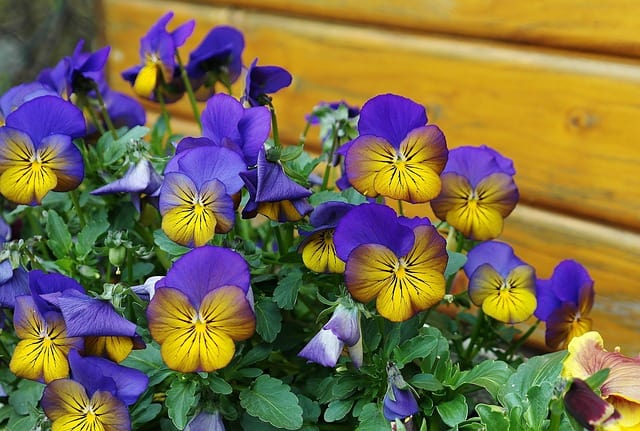
Temperature Tolerance: Johnny-Jump-Ups thrive in cooler temperatures, ideally between 50°F and 70°F (10°C to 21°C). They can tolerate light frosts, making them a good choice for transitional seasons.
Planting Dates: These cheerful flowers can be sown from early spring through late June, which allows them to establish themselves while temperatures are still moderate.
Details and Tips: Johnny-Jump-Ups are delightful in shaded areas and can easily self-seed, offering blooms year after year. They make excellent companions for spring bulbs and can fill in gaps in flower beds. Their cute, heart-shaped leaves and charming flowers also hold appeal for both pollinators and gardeners alike.
Candelabra Primulas (Primula section Proliferae)

Temperature Tolerance: Candelabra primulas prefer cooler temperatures, ideally between 50°F and 68°F (10°C to 20°C). They should ideally be protected from extreme heat, which can cause wilting and reduced flowering.
Planting Dates: For optimal growth, plant candelabra primula seeds in late spring to early summer (May to June) when the soil is warm enough to encourage germination.
Details and Tips: These plants thrive in moist, rich soils and can make a dramatic statement with their tiered flower heads. They are perfect for partially shaded areas and work well in woodland gardens. Regular watering is crucial; they love to keep their roots cool and moist, making them a favorite for damp garden spots.
Night-Scented Stock (Matthiola longipetala)
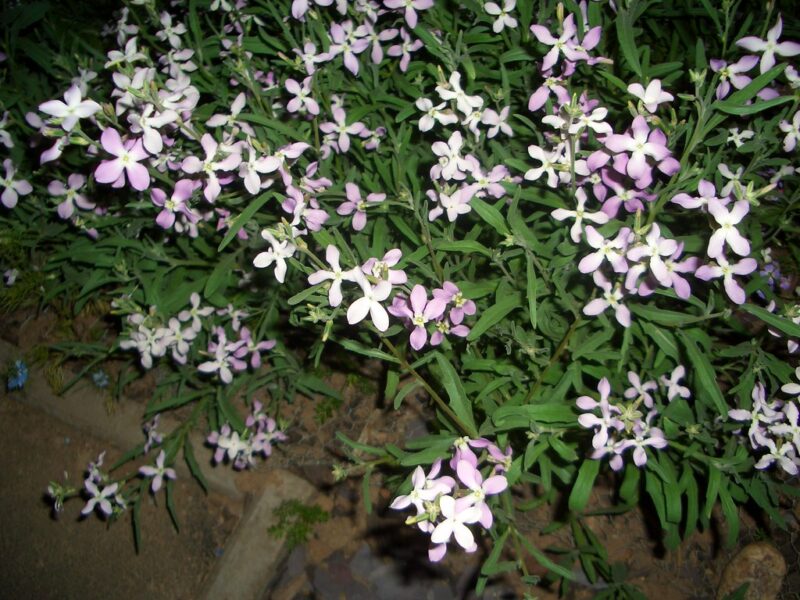
Temperature Tolerance: This fragrant beauty thrives in moderate temperatures of 60°F to 75°F (15°C to 24°C). Excessive heat can negatively impact blooming.
Planting Dates: Sow seeds directly in the garden from late spring through early June for the best fragrance and blooms.
Details and Tips: Night-scented stock exudes its delightful fragrance in the evening, making it ideal for moon gardens or patios. This plant does well in well-drained soil and looks wonderful in mixed borders. Planting them in clusters can amplify their delightful scent, inviting both bees and nocturnal pollinators.
Vegetables Worth Sowing in June
Melons
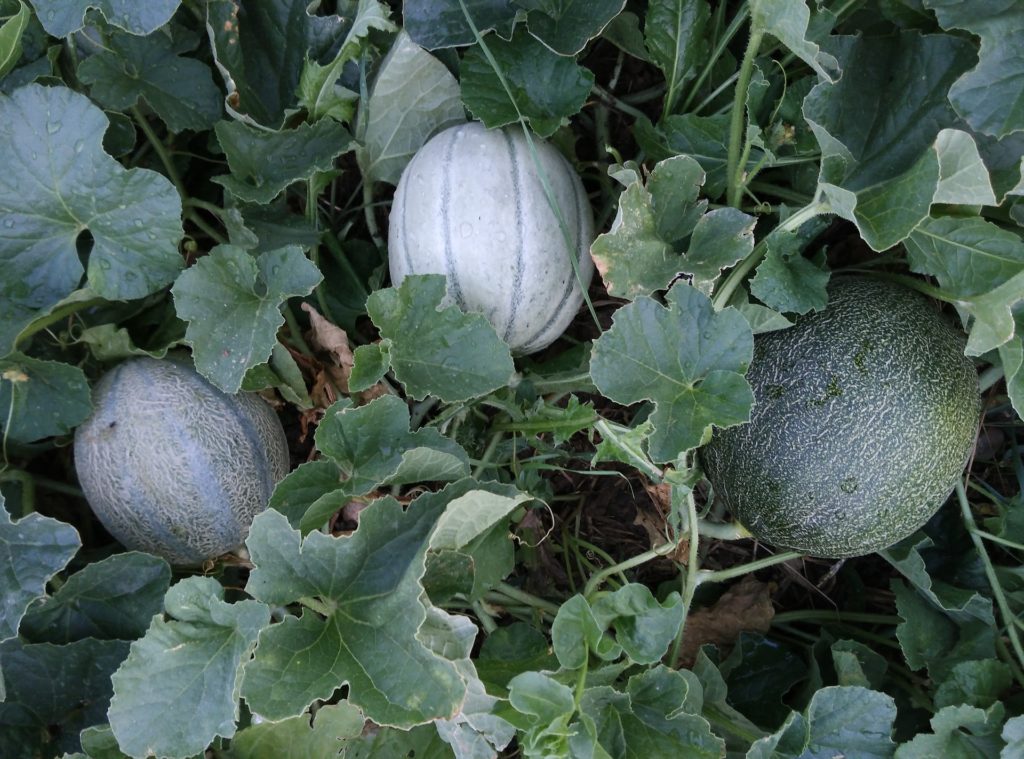
Temperature Tolerance: Melons prefer warm conditions, thriving in temperatures between 70°F and 90°F (21°C to 32°C), and should not be exposed to frost.
Planting Dates: Sow melon seeds directly outdoors from late May to June when the soil has warmed sufficiently.
Details and Tips: Melons require ample sun and fertile, well-draining soil. With a little patience (as they take time to ripen), your reward will be hot summer days spent enjoying sweet, fresh melons straight from the garden. Mulching can help retain moisture and prevent weeds.
Zucchini
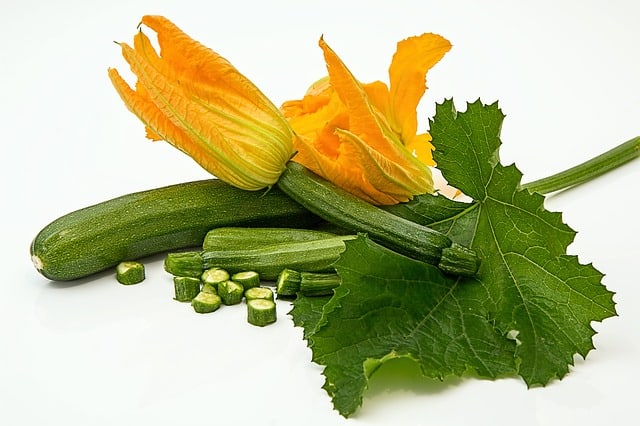
Temperature Tolerance: Zucchini thrives in warm soil, ideally between 70°F and 95°F (21°C to 35°C), and is highly sensitive to frost.
Planting Dates: Sow zucchini seeds from late May to early June to ensure a healthy summer crop.
Details and Tips: With proper care, zucchini plants can yield an abundance of fruit. They benefit from regular watering and should be planted with ample space between plants to promote airflow and prevent mildew. Keep an eye on the fruit size—harvesting zucchini while small leads to tender flavor.
Corn
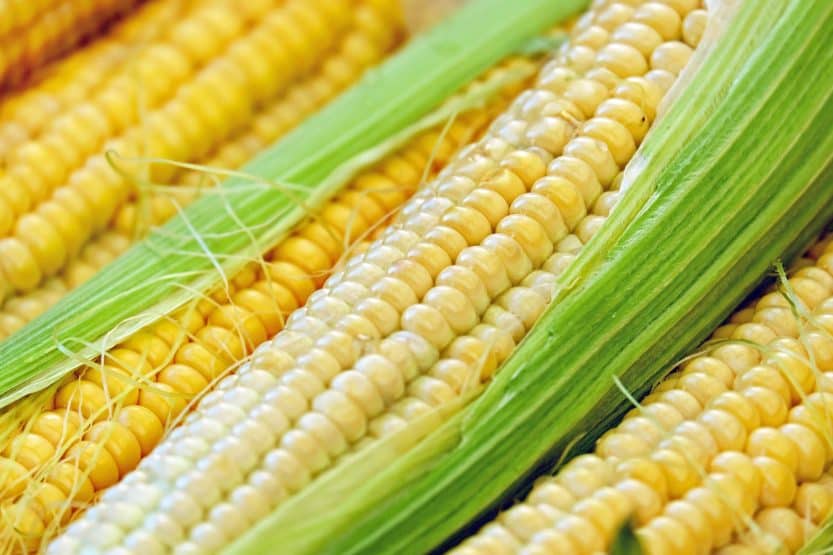
Temperature Tolerance: Corn grows best in temperatures around 60°F to 95°F (15°C to 35°C) and can withstand short periods of heat but cannot tolerate frost.
Planting Dates: Ideal planting time is from late April to early June, allowing the seeds enough warmth to sprout.
Details and Tips: Plant corn in blocks rather than rows to aid pollination, ensuring healthy and robust stalks. Regular watering is key, especially when the tassels begin to develop. Corn not only offers sweet, juicy ears but also creates a lovely, towering backdrop in your vegetable garden.
Cucumbers
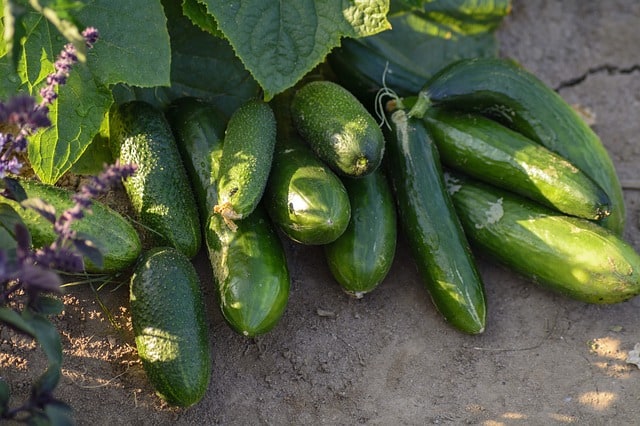
Temperature Tolerance: Cucumbers flourish in warm weather, ideally in temperatures between 70°F and 95°F (21°C to 35°C). They are frost-sensitive and should be planted after the last frost date.
Planting Dates: Cucumber seeds can be sown directly outdoors from late May to June, after the soil has warmed.
Details and Tips: Cucumbers are climbing plants that can save space in the garden by utilizing trellises. They enjoy ample water, particularly during fruit development, so ensure consistent moisture levels. Regular picking encourages further production, so don’t hesitate to harvest when they reach the desired size.
Pumpkins
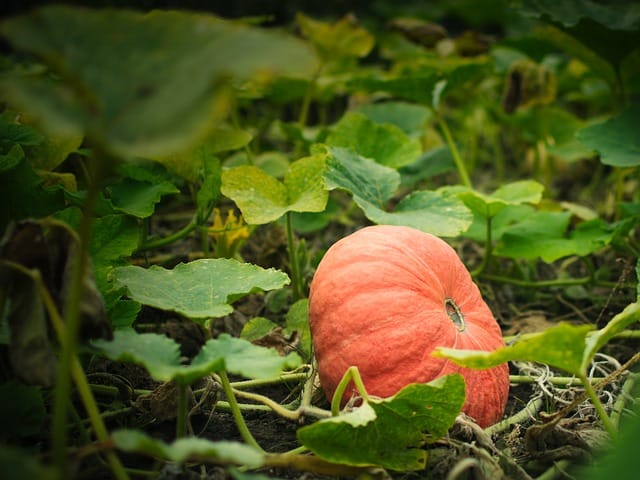
Temperature Tolerance: Pumpkins thrive best in warm temperatures between 70°F and 90°F (21°C to 32°C) and are extremely frost-sensitive.
Planting Dates: Plant pumpkin seeds in June for the best chance of harvesting before the first frost in fall.
Details and Tips: Pumpkins require substantial space to grow and do well in rich, well-draining soil. They should be watered regularly, particularly as the fruits begin to set. With the right care, they can grow enormous, becoming a favorite for autumn decorations and holiday festivities.
Sweet Potatoes
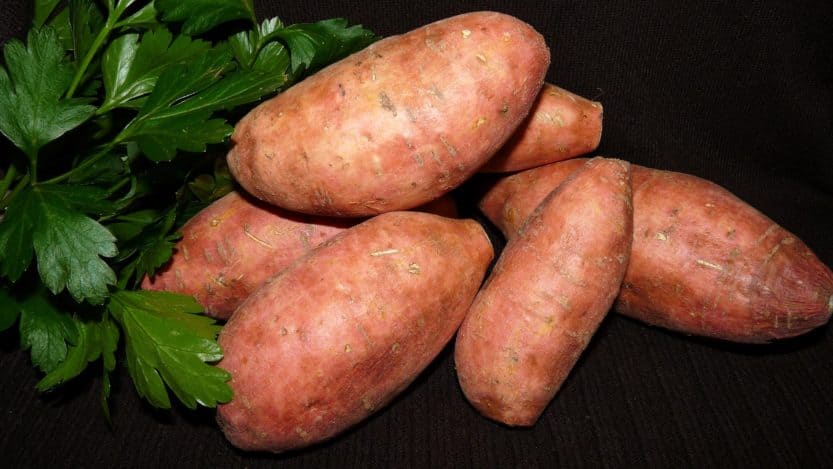
Temperature Tolerance: Sweet potatoes require warm temperatures, ideally between 70°F and 95°F (21°C to 35°C), and are very sensitive to frost.
Planting Dates: Sweet potato slips can be planted from late May to early June for a successful crop.
Details and Tips: These plants thrive in well-draining, sandy soils. Regular, deep watering supports healthy tuber development. A good mulch layer can help retain moisture and control weeds. With proper sun exposure, sweet potatoes will yield a flavorful harvest that can be stored for months.
Basil
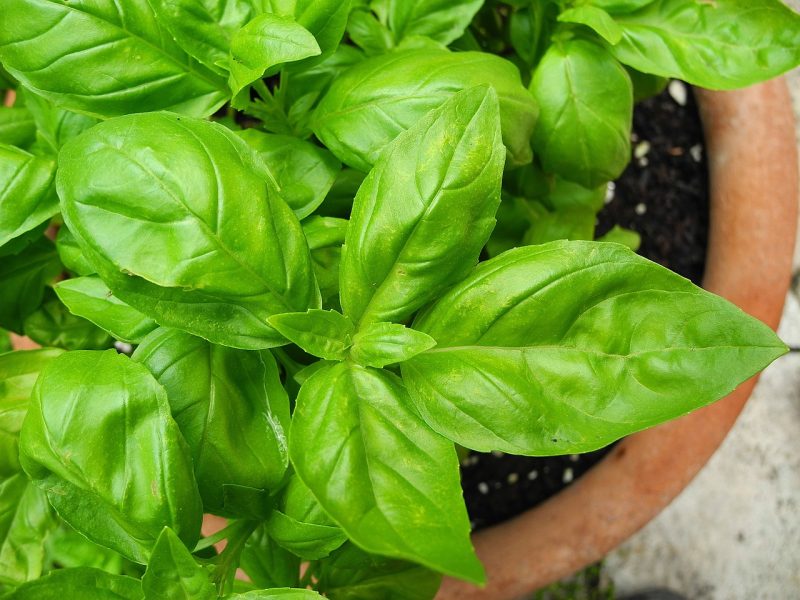
Temperature Tolerance: Basil enjoys warm weather and grows best at temperatures between 70°F and 90°F (21°C to 32°C). It is particularly sensitive to cold and should not be exposed to frost.
Planting Dates: Basil seeds can be sown indoors before the season and later transplanted, or sow them directly outdoors from mid-May to June.
Details and Tips: This fragrant herb benefits from plenty of sunlight, rich soil, and regular watering. Pinch back tips regularly to encourage bushy growth. At the end of summer, consider harvesting and making pesto or drying excess leaves for later use.
Eggplant
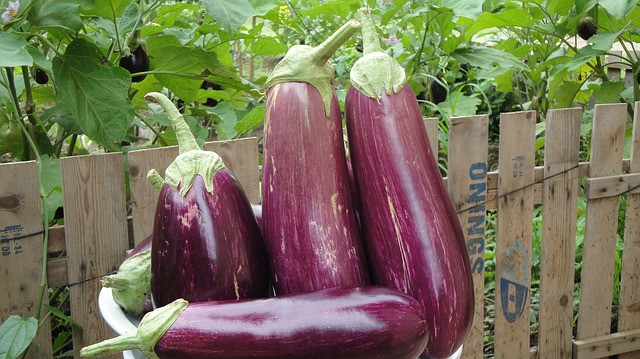
Temperature Tolerance: Eggplants prefer warmer temperatures, ideally between 70°F and 85°F (21°C to 29°C), and they are extremely sensitive to frost.
Planting Dates: Eggplant seeds can be started indoors and then transplanted or sown directly from late May to early June.
Details and Tips: Eggplants enjoy rich soil and regular watering, especially during fruit development. They need support if they grow tall and produce sizable fruits. The variety of eggplants available—from long, slender Asian types to the classic round globe—offers a wide array of culinary uses.
Tomatoes
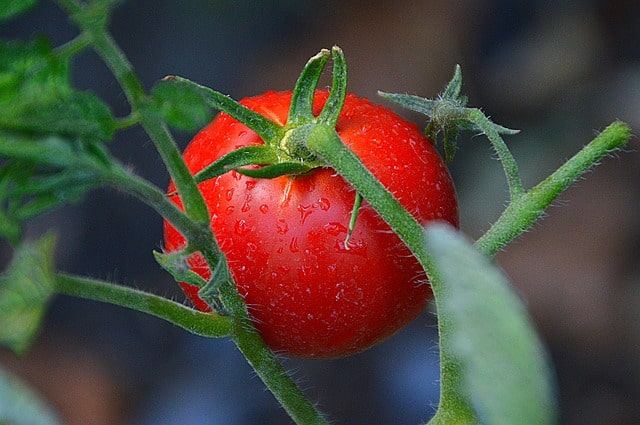
Temperature Tolerance: Tomatoes do best in warm temperatures, ideally between 65°F and 85°F (18°C to 29°C). Frost can quickly damage young plants, so ensure protection in cooler climates.
Planting Dates: Tomato seeds can be started indoors and then planted outside from late May to June when the soil is consistently warm.
Details and Tips: Tomatoes need rich, well-drained soil and benefit from consistent watering and sunlight. Consider staking or caging them for support as they grow taller. The incredible variety of tomatoes—from sweet cherry types to robust beefsteaks—opens up numerous culinary opportunities.
Beans
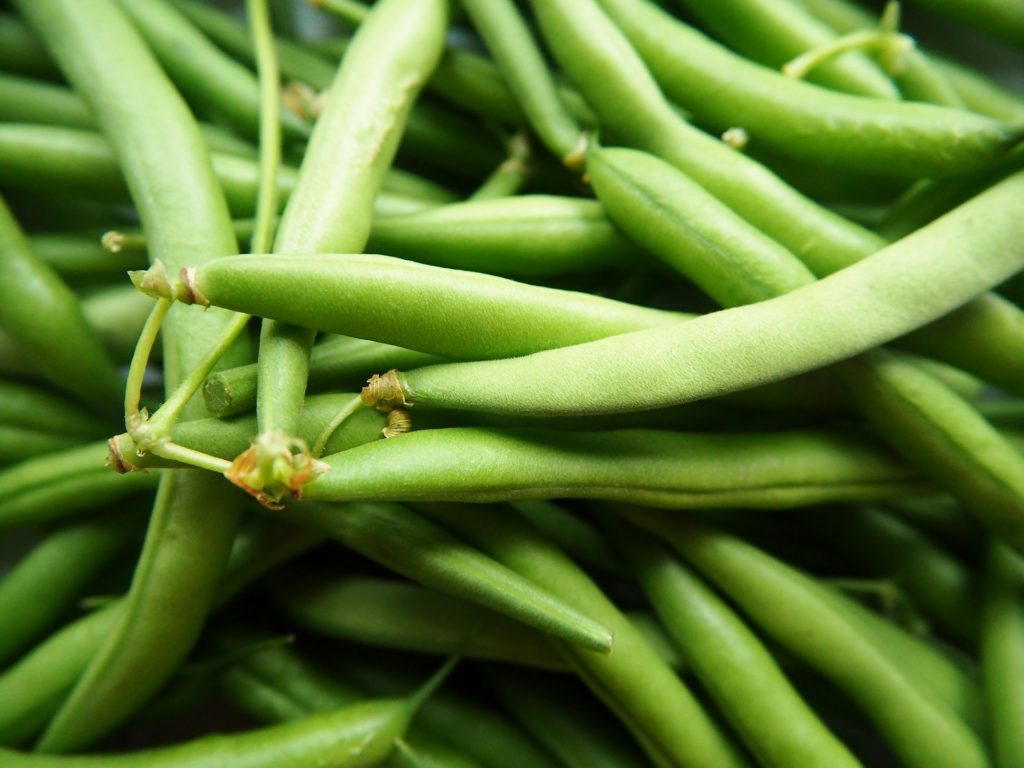
Temperature Tolerance: Beans prefer warm temperatures between 60°F and 90°F (16°C to 32°C) and are not frost-hardy.
Planting Dates: Beans can be sown directly into the garden from late May to mid-June, ideally when the soil has warmed.
Details and Tips: Beans grow quickly and can be bush or pole varieties, which utilize vertical space as they climb. They naturally enrich the soil by fixing nitrogen, making them perfect companions for other crops. Regular harvesting promotes continuous production throughout summer.
Tomatillo
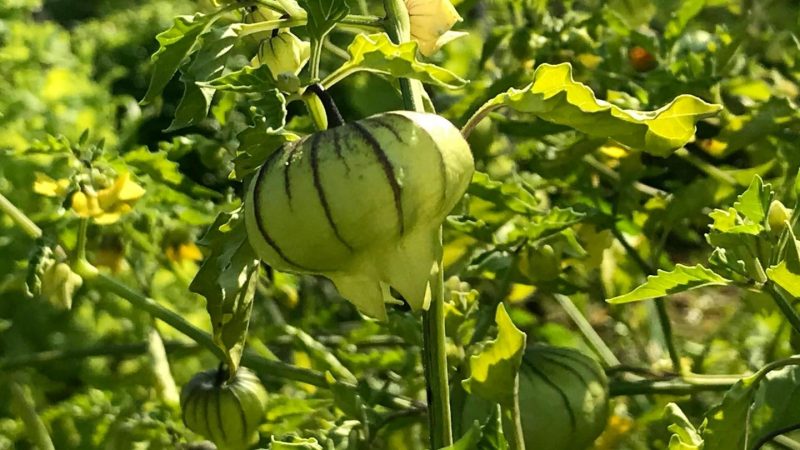
Temperature Tolerance: Tomatillos prefer warm weather, thriving in temperatures between 70°F and 85°F (21°C to 29°C) and are frost-sensitive.
Planting Dates: Tomatillo seeds should be sown outdoors from mid-May to early June.
Details and Tips: Tomatillos require ample sunlight and should be planted with neighbors to aid pollination. With their distinctive husks, they are perfect for making salsas and sauces, providing a delightful burst of flavor.
Ground Cherries

Temperature Tolerance: Ground cherries thrive in warm conditions, ideally between 65°F and 85°F (18°C to 29°C), and they are sensitive to frost.
Planting Dates: You can sow ground cherry seeds outdoors from late May through June.
Details and Tips: These plants grow as small, bush-like structures and produce small, sweet fruits encased in a lantern-like husk. They are unique and provide a fun tasting experience, often sweetening gardens with their unique flavor profile.
Malabar Spinach
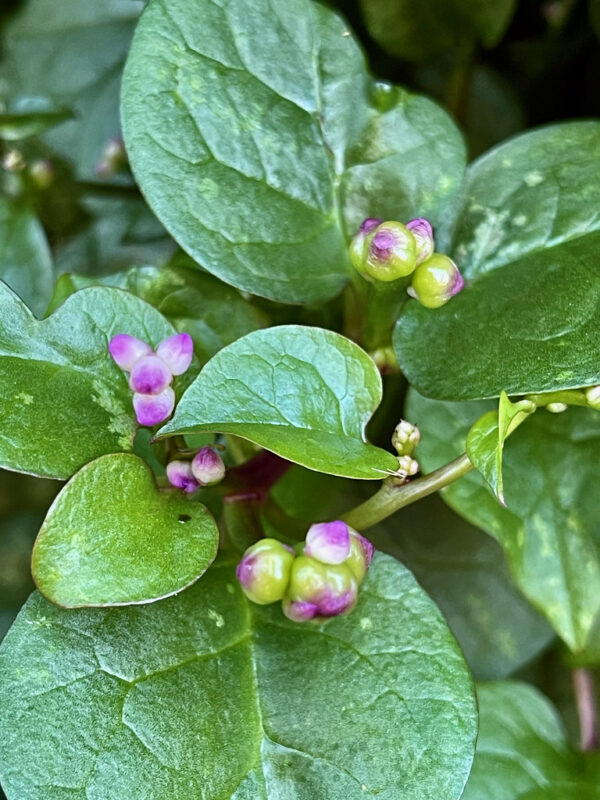
Temperature Tolerance: Malabar spinach prefers warm temperatures, ideally between 70°F and 90°F (21°C to 32°C), thriving in summer heat.
Planting Dates: Sow seeds or transplant young plants from late May to early June.
Details and Tips: This leafy green is a climbing plant, requiring a trellis or support. Its thick leaves provide a nutritious, spinach-like alternative. Malabar spinach is also known for its drought tolerance, making it a valuable plant to include in gardens prone to heat.
Beets
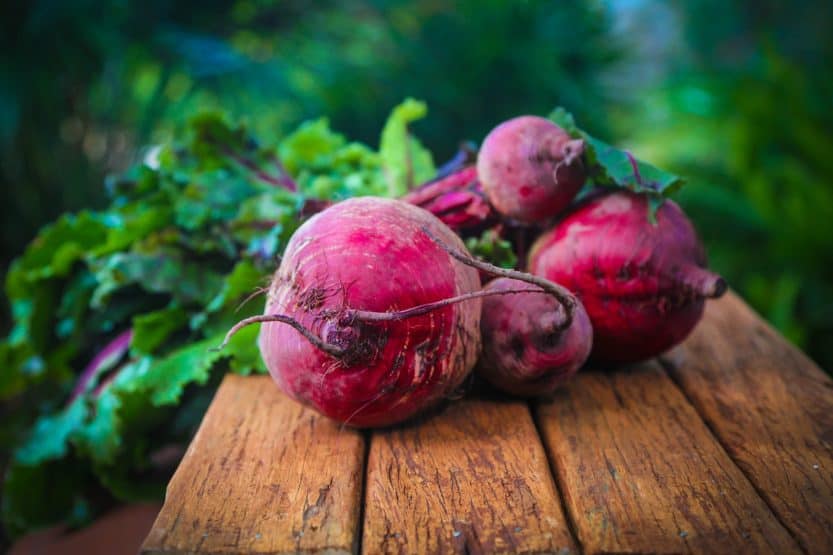
Temperature Tolerance: Beets grow best in moderate temperatures between 50°F and 75°F (10°C to 24°C). They can tolerate cool temperatures, making them suitable for spring through fall plantings.
Planting Dates: Sow beet seeds from late April to early June, allowing them to grow while the weather remains mild.
Details and Tips: Beets thrive in rich, well-draining soil with regular watering. They can be harvested at any point size, making them versatile for various culinary uses. Their greens are also edible and nutritious, promoting zero waste from your gardening efforts.
Chard

Temperature Tolerance: Chard is quite adaptable and grows well in temperatures ranging from 50°F to 85°F (10°C to 29°C). It can handle slight frosts.
Planting Dates: You can sow chard seeds from late April through June to enjoy a continuous harvest.
Details and Tips: Chard’s colorful stems and large leaves add visual interest and nutrition to your garden. Regular harvesting encourages new growth, resulting in an ever-abundant supply of greens. Chard is versatile and can be enjoyed in salads or cooked dishes.
Collard Greens

Temperature Tolerance: Collard greens thrive in temperatures between 60°F and 75°F (15°C to 24°C). They can withstand cooler conditions and some frost, enhancing their flavor.
Planting Dates: Sow collard green seeds from late April to early June for a successful summer and fall harvest.
Details and Tips: These leafy greens grow robustly and can be harvested throughout the summer. Regular rainfall or watering is essential to prevent the leaves from becoming tough. Collards are celebrated for their nutritional value, making them a valuable garden addition, particularly for southern cuisines.





